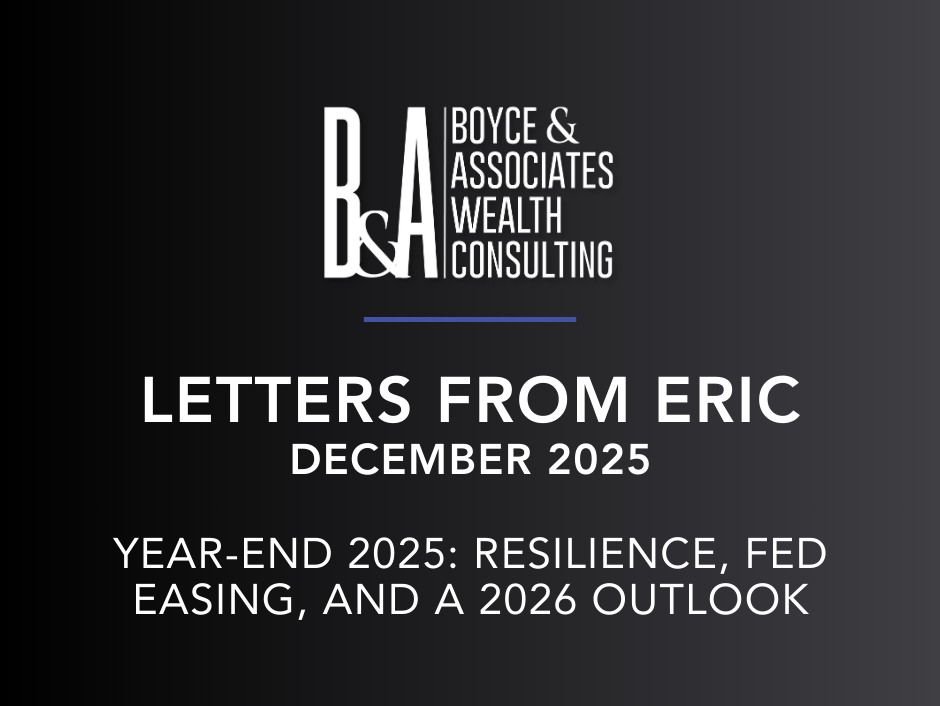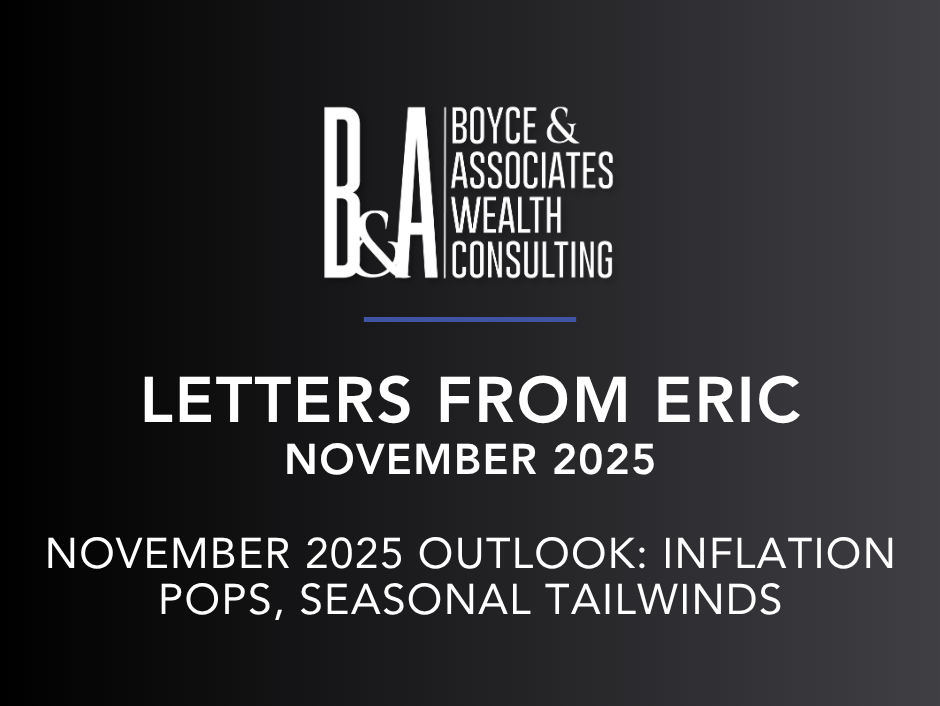Charts & Chat - January 21, 2024
Eric Boyce • January 21, 2024
This week, CEO Eric Boyce, CFA discusses:
1. Beige Book, Retail Sales stronger - propped up by real wage growth
2. home builder sentiment, housing starts improving
3. manufacturing remains sluggish, per Philly Fed data
4. near term expectations high, perhaps too enthusiastic; longer term "retirement expectations" a bit more muted though
5. update on corporate, household financial health
6. power of long term compounding of returns illustrated, long term benefit of stocks versus cash
7 There is a LOT of cash on the sidelines; should help to support investment growth longer term.
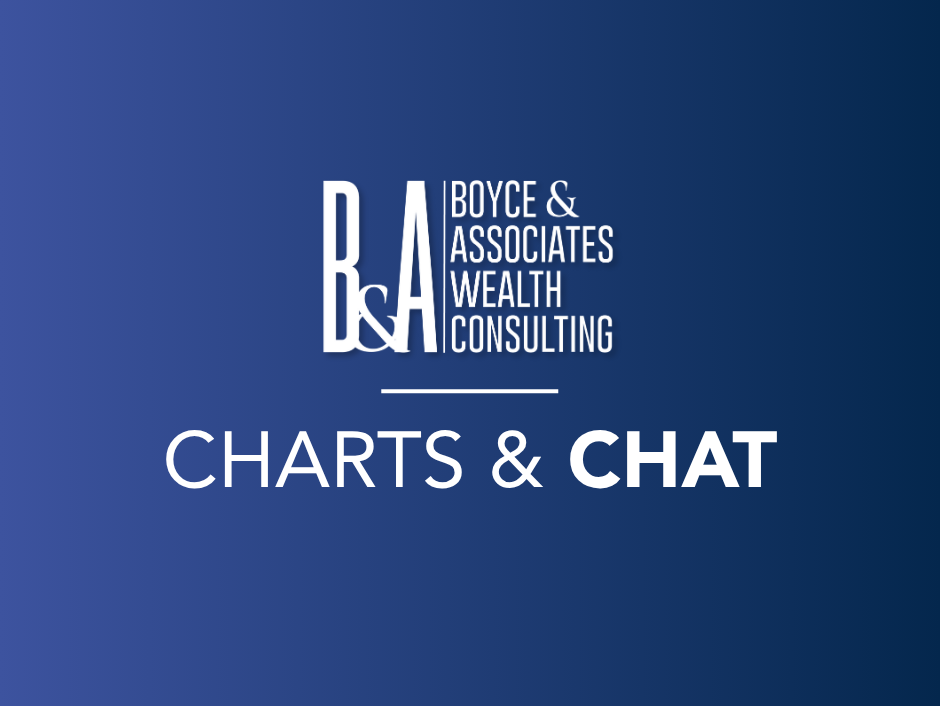
By Eric Boyce
•
December 1, 2025
This week, CEO Eric Boyce, CFA discusses: 1. 3rd quarter GDP looking close to 4% annualized; retails sales setting up positive 4th quarter 2025 growth scenario 2. probability of rate cut this next month increased based on recent Fed speakers and weaker labor data; regional data is mixed, but overall data has a positive bias 3. sentiment lower overall, and dragged down by lower incomes; creates some ambiguity over first quarter 2026 economic growth prospects 4. house price growth stalling; pending home sales showing some signs of life 5. market breadth discussion - Mag 7 versus the rest of the index; growth versus value, large versus small could be at an inflection point(?) 6. Potential signals from increased insider selling; however, increased foreign investment in US markets 7. yield curve discussion; some of the reason behind gold's rise 8. commodity markets settling down; crude oil futures lower
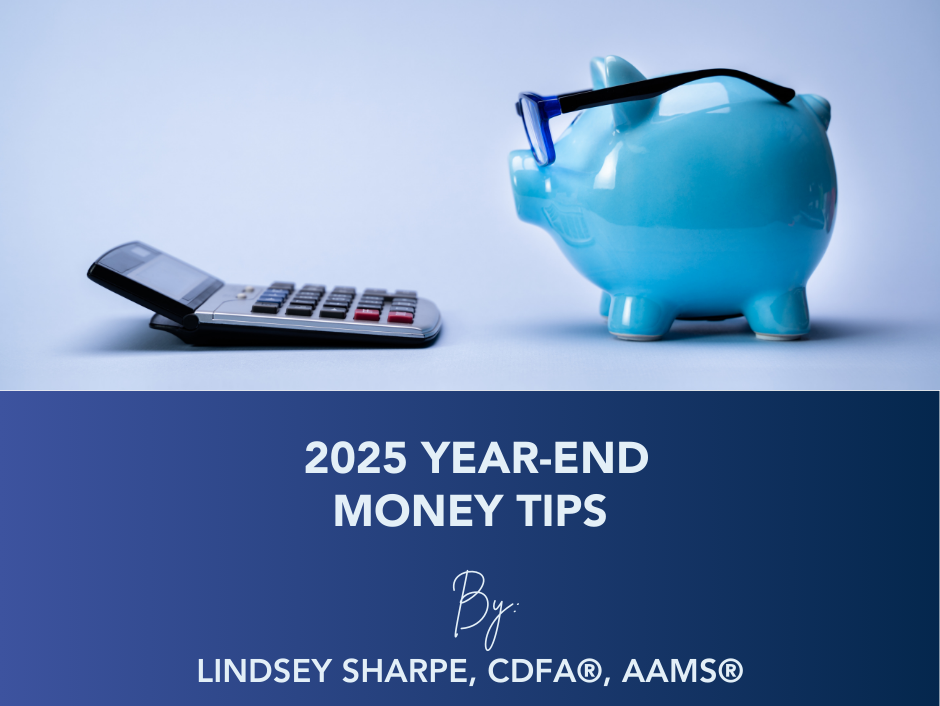
By Lindsey Sharpe
•
December 1, 2025
As 2025 winds down, it’s a great time to review your financial strategy. Many tax-advantaged opportunities expire on December 31, so acting now can put you in a stronger position for 2025. Always consult your CPA or financial advisor before making any changes. 1. Max Out IRA Contributions (Including Backdoor Roths) For 2025, the IRA contribution limit is $7,000 (under 50) or $8,000 (50+). Roth contributions phase out for singles with MAGI $150,000–$165,000 and joint filers $236,000–$246,000. If your income exceeds these limits, a backdoor Roth contribution may be an option. Pre-tax IRA balances can trigger partial taxation under the pro-rata rule. 2. Roth Conversions Move money from a Traditional IRA or pre-tax retirement account into a Roth IRA. Taxes are paid now, but future growth and withdrawals are tax-free. Year-end is ideal if your income is lower, you experienced job changes, or you want to reduce taxes for heirs. Converting an employer plan account or Traditional IRA to a Roth IRA is a taxable event. Increased taxable income from the Roth IRA conversion may have several consequences including but not limited to, a need for additional tax withholding or estimated tax payments, the loss of certain tax deductions and credits, and higher taxes on Social Security benefits and higher Medicare premiums. Be sure to consult with a qualified tax advisor before making any decisions regarding your IR A. 3. Required Minimum Distributions (RMDs) If you are 73 or older, you must take RMDs from most retirement accounts, including Traditional IRAs and 401(k)s. Failing to take an RMD in 2025 results in a 25% excise tax. RMDs are calculated using your prior year-end balance, age, and IRS Life Expectancy Factor. Inherited IRAs also require RMDs, which can be complex—consult an advisor. 4. Tax-Loss Harvesting Selling investments at a loss in taxable accounts can offset gains and reduce taxable income, with up to $3,000 deductible against ordinary income. Current clients: We routinely implement tax-loss harvesting at year-end. Tax-loss harvesting is a strategy of selling securities at a loss to offset a capital gains tax liability. It is typically used to limit the recognition of short-term capital gains, which are normally taxed at higher federal income tax rates than long-term capital gains, though it is also used for long-term capital gains. 5. Charitable Giving, QCDs & DAFs Donations made by December 31 may be deductible if you itemize. If you’re 70½+, a Qualified Charitable Distribution (QCD) can satisfy all or part of an RMD and reduce taxable income. A Donor-Advised Fund (DAF) allows contributions this year with an immediate tax deduction, while you recommend grants over time. Funds grow in the account, offering flexibility for strategic giving. With thoughtful planning, year-end is a chance to reduce taxes, meet retirement obligations, and start 2026 financially prepared. We are available to answer any questions. Happy holidays from all of us at Boyce & Associates Wealth Consulting!

By Eric Boyce
•
November 24, 2025
This week, CEO Eric Boyce, CFA discusses: 1. sales growth heading into holiday shopping season; economic indicators looking at +4% annual economic growth coming out of the 3rd quarter 2. factory orders positive but not "strong"; labor market weakness outside of leisure, hospitality, education and healthcare 3. new home prices now below existing home prices due to inventory shortages, high % of mortgages still below 4%, builder incentives 4. financial conditions "looser"; Philly Fed/Kansas City Fed report softer new orders, but perhaps some optimism on the margin 5. delinquency rates picking up in commercial office, as vacancies continue to rise 6. consumer credit indicators holding somewhat steady, except for credit card delinquencies 7. market correction underway in tech stocks; overall volatility is back on the table (especially for many of the Mag 7 and bitcoin) 8. consumer discretionary outperforming staples; equal weighted S&P 500 at a historic lag to capitalization weights 9. cattle, cotton, cocoa prices in decline. offset by corn, soybeans

By Eric Boyce
•
November 17, 2025
This week, CEO Eric Boyce, CFA discusses: 1. small business and corporate sentiment appears favorable; capital spending trends and expected pricing power looking better 2. some stress in the credit markets, especially student loans; bankruptcies higher 3. evidence of K-shaped economy - healthcare premiums, groceries, lower wage growth 4. global and US valuations are indeed stretched, although this is not your father's S&P 500 - concentration of technology makes some historical comparisons difficult. Most consecutive days of the S&P 500 trading above its 50 day moving average since 2008 5. stocks fueled by liquidity, better than expected earnings performance and higher sustained profit margins 6. volatility still relatively low, but risk of increased volatility is prevalent 7. growth stocks outperforming value, large outperforming small; international returns expected be higher than US looking out 10 years, per Goldman

By Eric Boyce
•
November 10, 2025
This week, CEO Eric Boyce, CFA discusses: 1. Record length of government shutdown; estimated economic impact $10-30B per week 2. stock valuations bifurcated between Mag 7 and rest of market; profit margins remain elevated despite tariffs; earnings beats during latest quarter remain well above average. 3. high level of short term treasury bills increases supply & keeps interest rates likely higher than would otherwise be the case 4. relative size of US markets to the world dramatically higher than the global financial crisis 5. credit quality ok; delinquencies manageable (except for student loans) and may have reached an interim peak 6. labor market weakness, but not a large problem; other economic indicators not unfavorable 7. holiday sales forecast calls for 4% growth; median age for first time homebuyer is 40 years

By Eric Boyce
•
November 3, 2025
This week, CEO Eric Boyce, CFA discusses: 1. the K-shaped sentiment indicator represents the difference between how the higher income populations view the economy versus the lower income levels. 2. inflation sticky, compounding Fed decisions. Future inflation expectations elevated 3. tariff rate ~15%, some increase in small business price increase expectations 4. profit margins expanding for Mag 7; flat to contracting for everyone else in S&P 500 5. increased breadth of market performance relative to 2023/24, but lower versus historical averages 6. delinquencies and defaults are higher, but may have peaked...(?) 7. banking system in good shape from a capital and loss coverage ratio perspective 8. perspectives on the use of alternative investments in a portfolio depending on age and net worth 9. GDP relative to stock prices going back to 1800; 10.gold as a hedge against uncertainty, increased central bank (and China) purchases of gold versus US treasuries

By Lindsey Sharpe
•
November 1, 2025
In today’s unpredictable markets, many investors want to protect what they’ve worked hard for—without missing out on growth. That’s where an annuity can help. When thoughtfully included as part of your overall financial plan, annuities can bring stability, guaranteed income, and long-term peace of mind. What Is an Annuity? An annuity is a contract with an insurance company designed to help you grow and protect your money. You can use it to build savings over time or to create a steady income stream in retirement. It’s not a one-size-fits-all product—there are different types designed for different goals. Here is an overview of them: Fixed & Indexed Annuities: Focused on Safety These options protect your principal and provide predictable growth. Fixed annuities pay a guaranteed interest rate for a set period. Fixed Indexed annuities link potential growth to a market index (like the S&P 500) but still protect your original investment from market losses. They’re ideal for investors who value stability and protection over chasing market highs. Fixed Annuities are long term insurance contracts and there is a surrender charge imposed generally during the first 5 to 7 years that you own the annuity contract. Indexed annuities are insurance contracts that, depending on the contract, may offer a guaranteed annual interest rate and some participation growth, if any, of a stock market index. Such contracts have substantial variation in terms, costs of guarantees and features and may cap participation or returns in significant ways. Investors are cautioned to carefully review an indexed annuity for its features, costs, risks, and how the variables are calculated. Any guarantees offered are backed by the financial strength of the insurance company. Surrender charges apply if not held to the end of the term. Withdrawals are taxed as ordinary income and, if taken prior to 59 ½, a 10% federal tax penalty. Variable Annuities: Growth with Optional Protection Variable annuities keep your money invested in the market through subaccounts, offering greater growth potential—but also more risk. You can customize them with optional riders (add-on benefits) for: Lifetime income (a steady paycheck for life) Enhanced death benefits for your loved ones Long-term care or income protection options These can be powerful tools for people who want market participation with a safety net . Please consider the investment objectives, risks, charges, and expenses carefully before investing in Variable Annuities. The prospectus, which contains this and other information about the variable annuity contract and the underlying investment options, can be obtained from the insurance company or your financial professional. Be sure to read the prospectus carefully before deciding whether to invest. The investment return and principal value of the variable annuity investment options are not guaranteed. Variable annuity sub-accounts fluctuate with changes in market conditions. The principal may be worth more or less than the original amount invested when the annuity is surrendered. Why Do People Choose Annuities? Income you can’t outlive (this is for FA’s and FIA’s not Variable) Tax-deferred growth on your earnings Protection from market downturns (depending on type) Customization for your goals and time horizon However, annuities come with fees and rules around withdrawals—so it’s important to understand the details before you invest. Our Approach at Boyce & Associates We believe every annuity should have a clear purpose in your financial plan —never as a “catch-all” product. That’s why we partner with dozens of top-rated carriers , not just one, to find the best solution for your specific needs. If you already own an annuity, it’s worth reviewing. Newer products often include better benefits and lower costs , and a professional review ensures your annuity still aligns with your goals. Only a portion of your retirement savings should be used to purchase an annuity. You want most of your money growing inside your brokerage accounts. This is why we always demonstrate how this looks in your financial plan. The Bottom Line Annuities can offer balance, predictability, and lifetime income , but they’re most effective when used intentionally. Knowing what you own and why you own it can make all the difference. You want to design these so you can access your income at the right time. If you’d like to explore how an annuity might strengthen your retirement plan—or review one you already have— our team is here to help you make confident, informed decisions.
